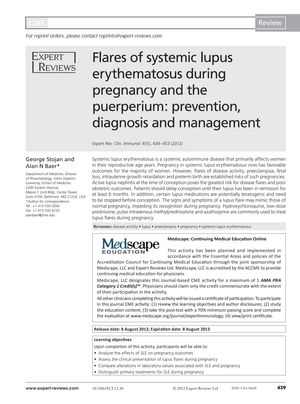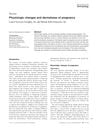Flares of Systemic Lupus Erythematosus During Pregnancy and the Puerperium: Prevention, Diagnosis, and Management
July 2012
in “
Expert Review of Clinical Immunology
”

TLDR Pregnancy can increase lupus activity, but careful planning and treatment can improve outcomes.
The document from 2012 examines the challenges and strategies for managing systemic lupus erythematosus (SLE) flares during pregnancy and the puerperium. It emphasizes the importance of delaying conception until SLE has been in remission for at least 6 months and adjusting medication regimens due to teratogenic risks. Diagnosis of flares is complicated by symptom overlap with normal pregnancy changes. Treatments for flares include hydroxychloroquine, low-dose prednisone, pulse intravenous methylprednisolone, and azathioprine. Studies show a two- to three-fold increase in lupus activity during pregnancy, with renal and hematological flares being more common. The document also discusses the use of Doppler ultrasound to predict adverse pregnancy outcomes and the individualized management of lupus flares, with hydroxychloroquine recommended for its safety profile. It notes that pregnancy outcomes have improved significantly, with the frequency of pregnancy loss decreasing from 43% in the 1960s to 17% in the early 2000s. Despite advancements, access to care remains a challenge for many women with SLE.





